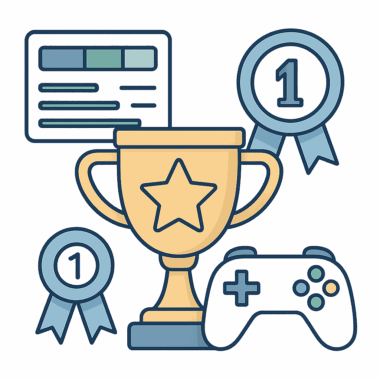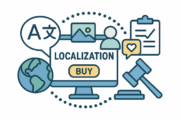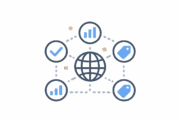

Gamification of Affiliate Programs: How to Motivate Affiliates with Game-Mechanics

Content:
- Why Gamification Works in Affiliate Programs
- Point Systems and Rewards
- Levels, Tiers, and Progression
- Badges and Achievements
- Quests, Missions, and Challenges
- Leaderboards and Competitions
- Rewards, Bonuses, and Prize Structures
- Tools and Platforms for Gamification
- Conclusion
- Frequently Asked Questions (FAQ)
Gamification has become one of the most effective ways to strengthen affiliate engagement and improve the overall performance of partner networks. By introducing structured game mechanics into traditional affiliate workflows, brands create measurable incentives that encourage consistent participation and higher productivity. The integration of progress indicators, competitive elements, and reward systems helps affiliates maintain long-term motivation, even in highly competitive markets.
Modern affiliate ecosystems increasingly rely on behavioral psychology and motivational design. This shift allows companies to enhance the user experience for partners, simplify onboarding, and reduce churn rates. Many businesses implement gamification of affiliate programs, aiming to differentiate themselves and offer affiliates a more engaging operational environment. When properly implemented, gamification creates a predictable, scalable framework that stimulates daily activity and drives revenue growth.
Why Gamification Works in Affiliate Programs
Gamification works because it activates core motivational drivers: achievement, mastery, autonomy, and social recognition. Affiliates respond more actively when they can visualize their progress through structured feedback loops, leveling systems, or reward mechanisms. These tools convert ordinary tasks—such as generating leads, improving CTR, or launching campaigns—into measurable achievements that feel attainable and rewarding.
Another reason gamification is effective is its ability to strengthen long-term retention. Affiliates often leave programs due to a lack of stimulation or unclear growth paths. Game mechanics solve this by providing continual milestones and transparent frameworks for advancement. As a result, affiliates maintain sustained participation, and companies benefit from predictable, scalable performance improvements across their networks.
Point Systems and Rewards
A point-based system is one of the most widely adopted forms of affiliate gamification strategies. Points function as a universal metric that aggregates multiple types of activities — conversions, sales volume, content creation, or campaign testing. This unified metric makes it easier for affiliates to understand what actions produce the highest value. It also gives program managers a flexible tool for adjusting incentives without rebuilding the entire reward model.
Points are typically exchangeable for various forms of compensation. Programs often allow affiliates to redeem points for exclusive tools, additional commission percentages, event tickets, or branded merchandise. The implementation of point multipliers, seasonal bonuses, and time-limited events further optimizes the system and sustains engagement throughout the year.
Levels, Tiers, and Progression
A structured tier system creates a clear hierarchy of roles within the affiliate program. Moving from a basic level to an advanced tier requires fulfilling specific performance requirements, such as hitting monthly sales thresholds or maintaining a consistent conversion rate. This model parallels traditional loyalty programs but is optimized for performance-based marketing. It gives affiliates transparent long-term goals and a clear understanding of how to optimize their strategies.
Levels also unlock tangible benefits. Higher tiers usually provide increased commission rates, early access to promotional materials, extended cookie durations, or priority support. Below is a sample comparison of tiered benefits:
| Tier Level | Requirements | Benefits |
| Bronze | New affiliates | Standard commission, basic tools |
| Silver | Moderate sales volume | +5–10% commission, access to premium creatives |
| Gold | High monthly performance | Highest commission rates, exclusive offers, private manager |
| Elite | Top 1–2% affiliates | Custom terms, revenue share bonuses, VIP events |
Tier-based structures create long-term engagement cycles and encourage affiliates to optimize their performance continuously.
Badges and Achievements
Badges and achievements enrich the motivational structure by rewarding specific milestones. Unlike tier progression, which usually focuses on cumulative results, badges highlight targeted accomplishments such as generating 100 qualified leads in a month or achieving a high retention rate. Affiliates value these distinctions because they represent public recognition of their expertise and effort.
Achievements can also support knowledge acquisition. For instance, training badges may be issued for completing onboarding modules or participating in advanced analytics workshops. These educational achievements enhance affiliates’ performance capabilities, strengthening the overall efficiency of the partner network. Incorporating game mechanics in affiliate marketing ensures that skill development becomes a rewarding and measurable experience.
Quests, Missions, and Challenges
Quests introduce dynamic objectives that give affiliates short-term motivations. They can take the form of limited-time missions or recurring weekly tasks, each with clearly defined goals. Examples include launching a new campaign within 24 hours, achieving a predefined CTR within a week, or increasing traffic from a new geo. These missions enhance flexibility, rewarding a diverse range of skill sets and marketing techniques.
Challenges often incorporate competitive elements. Seasonal competitions—such as “Holiday Traffic Boost” or “Summer Sales Sprint”—drive peak performance during high-demand periods. Quests also allow program managers to test new resources or promotional materials by encouraging affiliates to apply them in real campaigns. This creates valuable feedback loops and accelerates the optimization of internal marketing assets.
Leaderboards and Competitions
Leaderboards stimulate competition by publicly ranking affiliate performance. Visibility increases motivation and reinforces social recognition, particularly for affiliates who excel within competitive environments. Rankings can be based on revenue, number of conversions, average order value, or campaign consistency. Public leaderboards often generate higher engagement, while private dashboards can be used for internal motivation without external pressure.
Competitions add a dynamic layer to leaderboard systems. They can be short-term sprints or long-term tournaments with tiered prize pools. Categories may include “Top Newcomer,” “Best Content Creator,” or “Highest Growth Rate.” By diversifying categories, programs ensure fairness and encourage affiliates with different strengths to participate actively.
Rewards, Bonuses, and Prize Structures
Reward structures determine the success of a gamified framework. Effective systems combine monetary and non-monetary incentives to satisfy a wider range of motivational drivers. Monetary rewards usually include cash bonuses, commission boosts, and revenue share upgrades. Non-monetary rewards may involve software subscriptions, training access, VIP events, or personalized consultations.
Prize structures can be enhanced with mystery boxes or randomized rewards. This approach leverages variable reward psychology, increasing anticipation and engagement. Many programs introduce tiered prize pools where higher-performing affiliates gain access to exclusive benefits. Such diversification sustains motivation throughout the entire performance spectrum.
Tools and Platforms for Gamification
A variety of platforms support the implementation of affiliate program optimization through gamified mechanics. Some affiliate networks provide built-in gamification modules, while others rely on third-party extensions that integrate with CRM systems, analytics dashboards, and marketing automation platforms. Key features include real-time performance tracking, automated badge assignment, and customizable reward catalogs.
Advanced solutions also incorporate behavioral analytics that monitor participation patterns and engagement cycles. These insights help program managers identify high-potential affiliates, detect early signs of disengagement, and adjust the incentive system accordingly. By combining analytical tools with gamified mechanics, companies can build scalable, data-driven affiliate ecosystems.
Conclusion
Gamification has evolved into a powerful mechanism for enhancing the performance and engagement of affiliate networks. By integrating structured game mechanics—such as point systems, tier progression, missions, and competitions—companies create more dynamic, interactive, and motivating environments for their partners. These methods support consistent activity, improve retention, and encourage affiliates to invest more deeply in their long-term growth.
Well-designed gamification frameworks transform standard affiliate programs into strategic ecosystems built around measurable achievements and transparent progress. They create a competitive yet supportive environment where affiliates understand their goals and the path to advancement. As a result, brands strengthen loyalty, expand their reach, and build sustainable performance growth across their partner networks.
FAQ on Gamification in Affiliate Programs
1. What is gamification in affiliate programs?
Gamification is the process of integrating game-like mechanics—such as points, levels, achievements, and competitions—into standard affiliate workflows. It makes routine tasks more engaging and boosts partner motivation.
2. Why should brands use gamification?
Gamification increases affiliate activity, improves retention, strengthens loyalty, and encourages consistent performance. As a result, businesses gain more predictable growth and stronger long-term results.
3. Which gamification mechanics are most commonly used?
Commonly implemented elements include:
-
point systems;
-
levels and tiers;
-
badges and achievements;
-
quests, missions, and challenges;
-
leaderboards and competitions;
-
reward and prize structures.
4. How do point systems improve affiliate motivation?
Points convert various actions—sales, leads, content creation—into a single, understandable progress metric. This transparency helps affiliates clearly see which actions yield the greatest value, motivating them to stay active.
5. What are the advantages of levels and tiers?
Tiered structures give affiliates a long-term growth path. Higher levels typically unlock benefits such as increased commissions, exclusive offers, faster payouts, or priority support, reinforcing sustained engagement.
6. How are achievements different from levels?
Levels represent cumulative progress, while achievements reward specific milestones or skills—such as hitting a CTR target or completing training. This creates a more diverse and personalized motivation system.
7. What are quests, and how do they work in affiliate programs?
Quests are short-term or recurring tasks with clearly defined goals. They stimulate activity during key periods, encourage testing of new tools or creatives, and keep affiliates engaged throughout the year.

Localization Strategies for Global Affiliate Programs: Language, Culture & Compliance
Global affiliate programs operate in highly competitive markets where user expectations differ across regions. Brands that scale internationally must account for linguistic diversity, cultural norms, and jurisdiction-specific rules that influence how audiences interpret marketing content.





